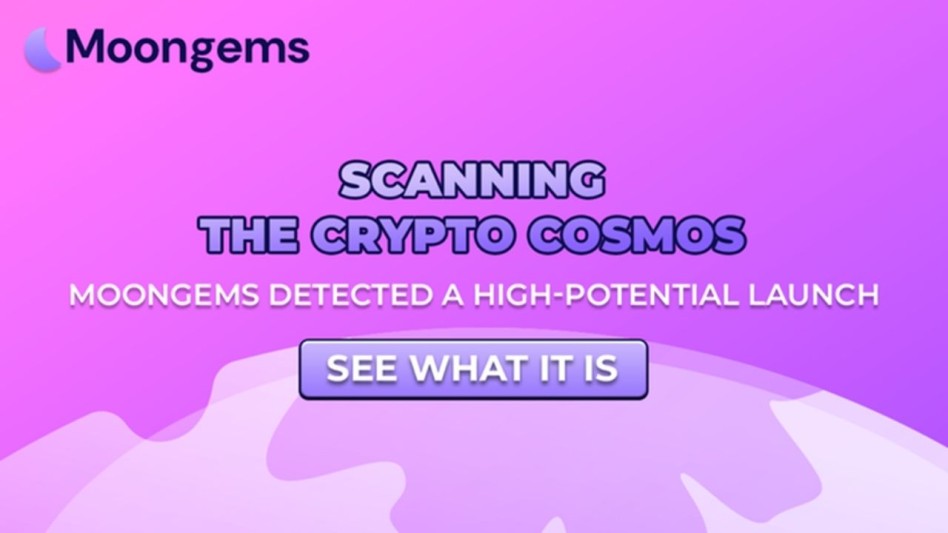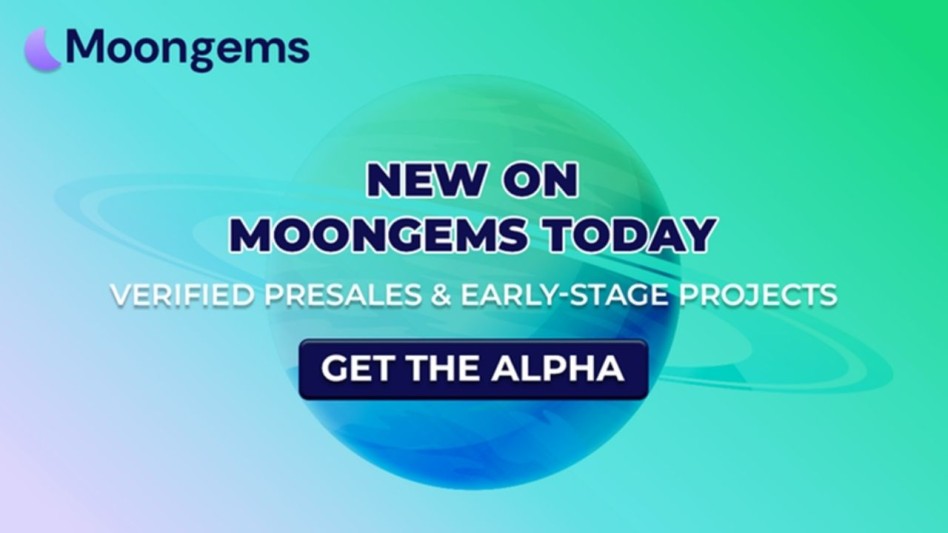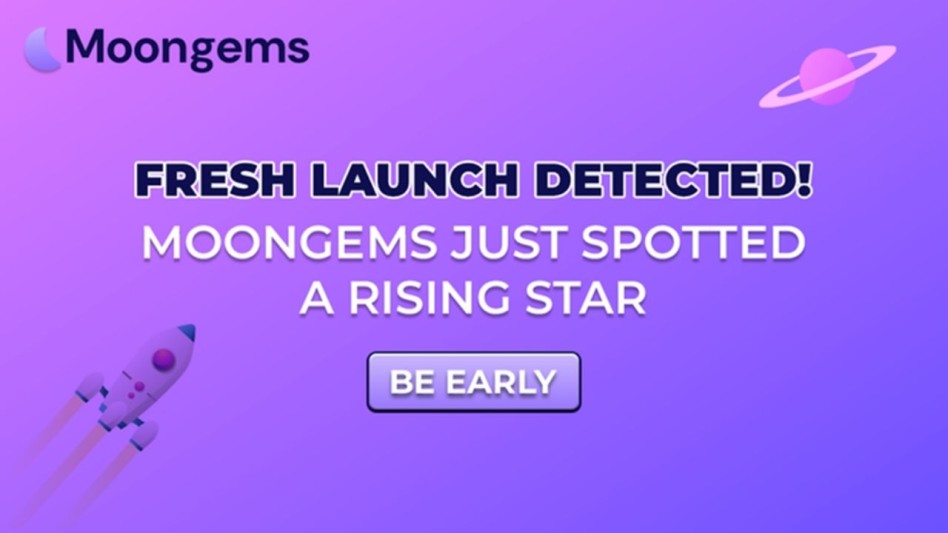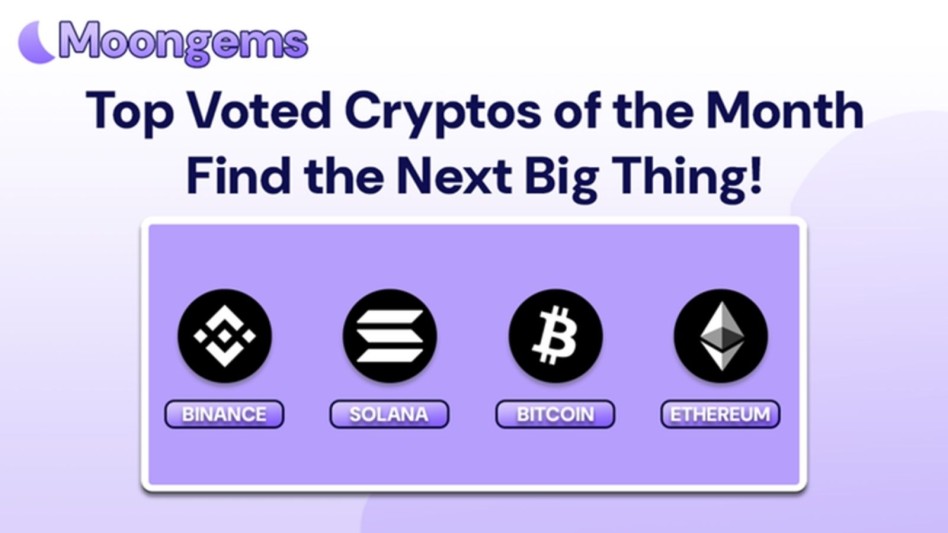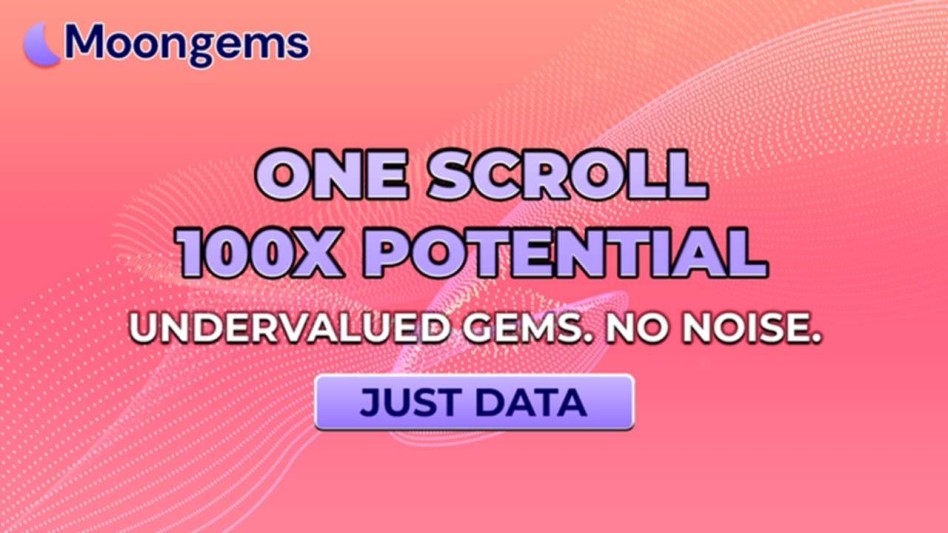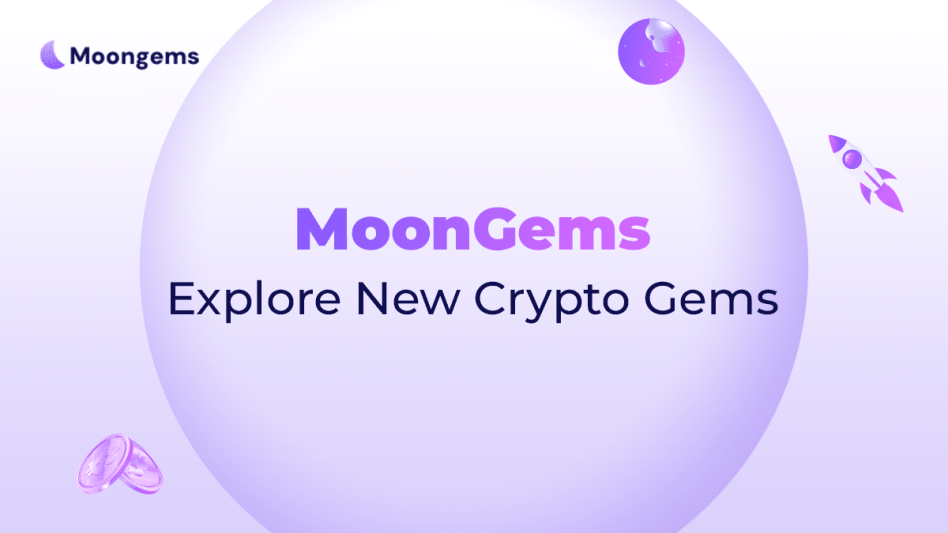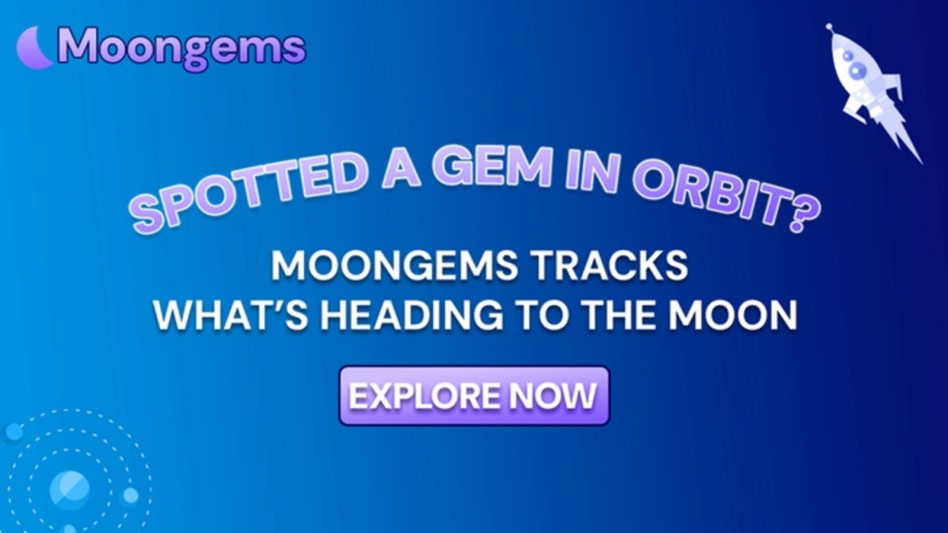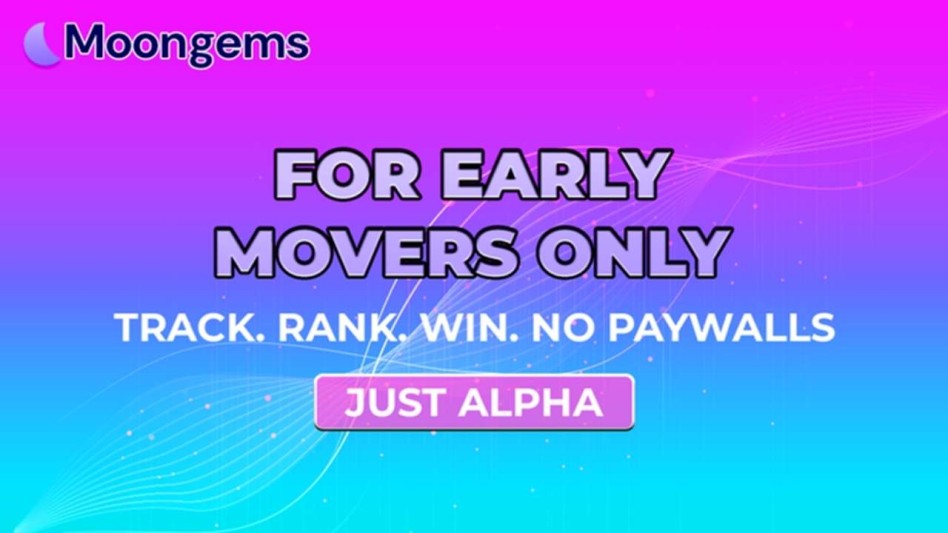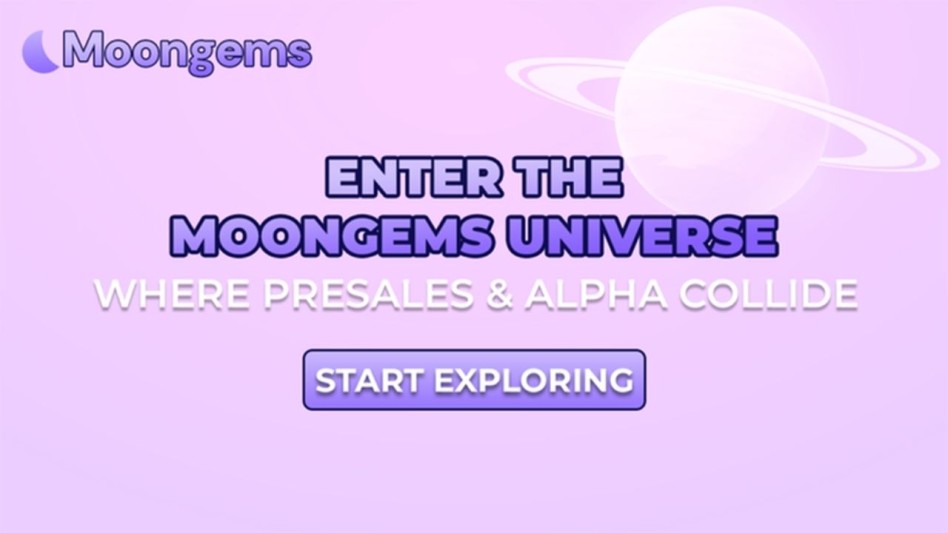Author: Jawad Hussain – Crypto Analyst & Web3 Researcher | 9+ years tracking presales, IDOs, and token launches. Follow him on Twitter
Let’s be honest — if you’re still using 2021 tokenomics playbooks in 2025, you’re already down 60%. Probably more.
The crypto markets have evolved, rugged, recovered, and mutated at least three times since the last bull run. The "burn + tax + staking = moon" formula no longer holds true. And those endless whitepapers copy-pasting token allocations like it's still the Binance Smart Chain summer? Totally washed.
This isn’t a market fueled by dreams — trust mechanics, incentives, and retention models fuel it. Tokenomics isn’t a side-note anymore — it's the product.
MoonGems has been tracking this shift from the frontlines. We’ve seen meme coins outperform VC-backed projects. Why? Because their tokenomics made people stay. We’ve seen staking pools die overnight, and presales turn ghostly silent after unlocking. Why? Because they were built on outdated mechanics, inflated promises, or just straight-up dumb design.
Tighten your seatbelt, because the old rules are dead. This is the 2025 tokenomics meta — and it’s way weirder, smarter, and more powerful than you think.
Hybrid Tokenomics: The New Gold Standard
Why One-Track Token Models No Longer Work
In the early days of crypto, many tokens could get away with a single mechanic: a basic burn, flat taxes, or inflationary staking. However, by 2025, the space had evolved. Investor expectations are higher, market competition is brutal, and attention spans are shorter than ever. Projects relying on just one type of token mechanic — whether it’s deflation or rewards — are getting outpaced by more versatile, layered ecosystems.
A token that only burns without offering utility loses engagement. A token that only inflates through staking eventually collapses under its weight. The one-size-fits-all approach is now a liability. In contrast, hybrid models are designed to withstand the test of volatility, user churn, and hype fatigue.
What Makes Hybrid Tokenomics Effective
The key to hybrid tokenomics is adaptability. By combining multiple mechanics, such as deflationary supply reduction, emission-based staking rewards, governance participation, and utility-based sinks, tokens can serve different types of users simultaneously. Some users want to stake and earn. Others want to use the token for platform access. Still others want to trade it as a speculative asset. Hybrid models let you serve all three without compromising the integrity of the token's economy.
A successful hybrid system doesn’t just plug in random features — it layers them in a way that creates loops. For example, staking may unlock access to features that, in turn, burn tokens when used. Or governance rights may come only after a certain staking threshold is met. These systems are economically interdependent, which encourages users to stay, interact, and reinvest rather than simply sell and exit.
Case Study: Arctic Pablo Coin’s Hybrid Framework
One standout in this new era is Arctic Pablo Coin. Instead of using traditional presale stages, it launched with a location-based unlock model, where tokens become accessible only when certain narrative-driven milestones are reached. This ties the economy directly to community engagement.
Staking rewards are tied to storyline progression, not just time or quantity held. Meme-based participation triggers burn events. In other words, every part of its tokenomics supports a loop: hold, engage, unlock, and reduce supply.
That’s what hybrid tokenomics is about: building something alive, not linear, but cyclical. And in a market as unpredictable as crypto, cyclical systems are the ones that endure.
Vesting That Actually Protects Holders
The Vesting Trap: How Projects Use It Against You
Vesting schedules were originally meant to create trust. They were designed to show that a team wouldn’t dump their bags the second the token went live. But let’s face it — in many projects, vesting is just a performance. It looks secure on paper, but in practice, it’s either poorly structured or just entirely fake.
The classic mistake? Time-based cliff vesting. Teams lock their tokens for 30 or 60 days, then unlock massive amounts all at once. That initial vesting period gives the illusion of commitment, but once the cliff passes, the price collapses under insider sell pressure. And the community? Left holding the bag.
Even worse are stealth unlocks, where tokens are distributed to new wallets and sold gradually, making it appear as though they are not from the original team. Without transparency and smart contracts to enforce the lockup, the vesting schedule is nothing more than a marketing ploy.
The 2025 Meta: Milestone-Based and On-Chain Vesting
The strongest projects in 2025 are flipping the script. Instead of measuring time, they’re measuring performance. Milestone-based vesting means that tokens are only unlocked when the project achieves key deliverables, such as launching a product, reaching a specific user count, or meeting a revenue milestone.
This model creates real alignment between the team and the community. No progress? No payout. It builds accountability into the ecosystem — and shows investors that the devs can’t profit without pushing the project forward.
Better still, this type of vesting is now on-chain and automated. Smart contracts handle the logic, eliminating the chance of manual unlock manipulation. Some projects also route vesting wallets through multisig treasuries, ensuring no single actor can trigger a dump.
Why This Model Wins Trust — and Keeps Floors Stable
When holders see milestone-based vesting tied to real goals — and they can verify those goals are unmet — they stay confident. Confidence prevents panic selling. Preventing panic selling stabilizes the floor price. Stable floors build community morale. And morale creates momentum.
It’s a loop, and smart tokenomics builds loops.
In 2025, if your vesting isn’t transparent, enforced, and tied to results, it’s not just weak — it’s dangerous. Every strong ecosystem begins with a fair, verifiable structure. And vesting? That’s the first trust test.
Dynamic Tax Systems (Not Flat Fees)
The Problem with Flat-Tax Tokenomics
In the early waves of DeFi and meme coin hype, flat taxes became a staple of the market. “Buy tax: 5%. Sell tax: 5%.” It was simple, easy to explain, and made meme charts look like they had a safety net. However, by 2025, this structure will not only be outdated but also harmful.
Flat tax systems are rigid. They don’t account for changing market conditions, human behavior, or strategic selling windows. Whether someone buys and sells within 10 seconds or holds for 10 days, the fee is the same. That uniformity sounds fair, but it creates friction without flexibility. It punishes long-term holders just as much as bots and snipers. And more importantly, it gives whales no reason to stay.
Flat taxes also tend to fund centralized wallets — dev wallets or marketing wallets that aren’t always accountable. Over time, this leads to community distrust, which in turn leads to exits, ultimately resulting in red candles. Sound familiar?
Dynamic Taxation: Engineering Behavior in Real Time
In 2025, top-tier tokenomics have embraced dynamic tax systems — smart contracts that adjust taxation based on time held, market volatility, volume, wallet behavior, or other real-time metrics.
For example, a project may impose a 15% sales tax in the first 24 hours after launch to deter bots and quick-flip traders. But after 72 hours, the sales tax drops to 5% for holders, and even lower after a week. This incentivizes holding and discourages early dumping. Some contracts even scan wallet activity and increase the tax for repeat offenders or significant whale transactions.
Other projects use volume-sensitive taxes, where a percentage of tax goes directly to LP or a burn wallet if the daily trading volume crosses a threshold, turning high activity into deflationary events. This is tokenomics as gameplay, where the contract shapes behavior like an economic simulation.
Smart Design Builds Loyalty — and Preserves Floors
Dynamic taxation builds fairness into the protocol. Instead of assuming all traders act the same, it creates rules that reward patience and punish manipulation.
More importantly, it signals that the project cares about long-term holders. When users see that taxes drop the longer they stay, it psychologically anchors them to the ecosystem. It’s not just about fees — it’s about feeling valued for the project's commitment.
In a space flooded with quick pumps and early exits, dynamic taxes create breathing room. They slow the sell pressure, increase LP health, and buy the team time to deliver, which, in today’s cycle, can be the difference between mooning and melting.
Staking with Real Utility (Not Just Inflation)
Why Traditional Staking is Failing in 2025
In past cycles, staking was crypto’s favorite buzzword. Lock up your tokens, earn a massive APY, and reap the benefits as if it were passive income. But under the hood, most of these models were nothing more than inflation-driven Ponzinomics. Projects would mint new tokens to pay out old stakers, which diluted the supply and crushed the price over time.
The illusion worked while hype was high — but once sell pressure kicked in, staking pools turned into exit ramps, not incentives. The result? Death spirals of inflation, broken community morale, and thousands of abandoned dashboards with 800% APR promises and $0.000001 tokens.
In 2025, that era is over. Projects that rely solely on inflation to reward staking are dead on arrival. Today’s investors are smarter. They don’t want just yield — they want utility.
The Rise of Utility-Based Staking Models
The staking systems that dominate today are tied to real-world use cases, product access, and narrative incentives. Instead of just earning more tokens, stakers gain benefits, often non-monetary, but deeply valuable within the project’s ecosystem.
Here’s how top projects are redefining staking:
- Access to early presales, NFT mints, or governance roles
- Boosted voting power or DAO participation privileges
- Discounted platform fees or in-game boosts
- Narrative perks: holding/staking allows progression in the storyline
- Eligibility for random airdrops, rewards, or gated events
This turns staking from a passive farm into an engagement layer. It makes users feel like they're part of something, rather than just watching numbers increase.
Even better? Some projects now offer NFT-gated staking tiers, where different NFTs unlock access to better staking pools or enhanced in-game benefits. It creates cross-ecosystem value that links identity, reputation, and economic activity.
From Yield to Identity: The New Purpose of Staking
In 2025, staking isn’t about “earning more.” It’s about belonging to the inner circle. The best tokenomics transform staking into a form of social capital — a means to demonstrate conviction, unlock privileges, and solidify your position within the tribe.
When staking grants you access to exclusive experiences, community decision-making, or narrative progression, it becomes sticky. It becomes fun. And it becomes sustainable — because people don’t just unstake to chase the next APY. They stay because they’re invested beyond numbers.
MoonGems reality check: If staking doesn’t unlock something, it’s not an incentive — it’s a trap.
Community-Owned Liquidity: The Trust Meta
The Liquidity Rug Era Is Over (Sort of)
It’s no secret — liquidity has been one of the most abused levers in crypto. From 2021 to 2023, we witnessed thousands of “LP rugs” where developers would hype a launch, add just enough liquidity to spark FOMO, then pull the plug and drain the pool. Even projects that didn’t outright rug often kept LP under centralized control — locking it short-term or holding it in wallets they could access “just in case.”
This has created a massive trust gap. New investors are no longer asking, “Is there liquidity?” — they’re asking, “Who owns it?”
In 2025, trust isn’t built through tweets or community vibes. It’s built through ownership models that prevent manipulation. The strongest of these? Community-owned liquidity.
What Community-Owned Liquidity Actually Means
At its core, community-owned liquidity means the project’s trading liquidity is either permanently locked, burned, or governed by a multisig or DAO. It cannot be pulled. It cannot be redirected. It is embedded in the protocol — transparent and verifiable on-chain.
Here are the dominant models today:
- Burned LP tokens: Once added to the pool, LP tokens are sent to a dead address. No one can touch them. Ever.
- Time-locked LP contracts: Using platforms like Unicrypt, the devs can’t move LP for months or years.
- DAO-controlled LP: Liquidity is held by the community treasury, with all movements voted on by token holders.
This removes the single point of failure — the dev wallet — and shifts power into the hands of the collective. It also creates economic integrity, because trading volume now directly benefits the protocol, not a centralized actor.
Why It’s More Than Just a Security Measure
Community-owned liquidity doesn’t just prevent rugs — it sends a message. It tells holders, “This isn’t a quick flip. This is a system meant to last.” That message has a massive psychological impact. It encourages larger buys. It reduces fear-based selling. It increases holder conviction.
In a landscape where rugpull PTSD is real, proof of locked liquidity is the new whitepaper. If your LP isn’t decentralized, your floor isn’t real.
MoonGems warning: If liquidity isn’t permanently locked or governed by the community, you’re one button away from zero. Don’t wait to find out.
What No Longer Works (But Still Gets Sold)
Outdated Tokenomics Are Still Everywhere
The crypto industry moves fast, but somehow, bad tokenomics die slowly. Despite everything we’ve learned in the last few cycles, you’ll still find new tokens launching in 2025 with the exact same models that wrecked projects in 2021. Why? Because they still sound good on paper, especially to newcomers.
High APYs, massive returns, and “marketing wallet” promises still attract FOMO buyers. These mechanics are often copied and pasted from other projects, given a fresh coat of branding, and sold as innovation. But in practice, they fail just as hard — because they’re built on outdated assumptions, unsustainable logic, or no logic at all.
This section isn’t just a list of what not to do — it’s a red flag radar. These are the mechanics that used to work, but no longer do, and are still being sold as if they were the secret to success.
The Tokenomics Gimmicks That Are Failing in 2025
Hyperinflationary Staking Rewards
Offering 1,000% APY sounds great… until everyone realizes the rewards are just being printed into existence. These staking systems inflate supply with no cap, no utility, and no sink. Within weeks, the token’s price nosedives as rewards hit the market and dump pressure skyrockets.
In 2025, inflation without utility = slow death. Yield must come from platform activity, not thin air.
Flat Tax Contracts with No Revenue Plan
Projects that charge a 10% buy and sell tax — and funnel it into a vague “marketing wallet” — rarely have a roadmap for sustainability. That money either gets drained by insiders or spent inefficiently. Without a clear, tracked reinvestment cycle, taxes are just an exit tool.
Modern investors want function-based taxes, not fluff.
Static Burns with No Utility Tie-In
Burning half the supply at launch looks impressive in a tweet, but if there’s no ongoing mechanism to reduce supply based on activity, it’s a one-time marketing stunt. Static burns create artificial scarcity without building economic pressure. And once that hype fades? So does the price.
A burn only works when it’s earned, not gifted.
Team Tokens That Unlock in 30–60 Days
Nothing screams “exit plan” louder than a team allocation that unlocks before a product even launches. Cliff unlocks are a major red flag in 2025. They show a lack of long-term commitment and create selling pressure that the community can’t counter.
Strong teams delay unlocks or tie them to delivery milestones, not time.
Buzzword Tokenomics with No Product
“AI tokenomics.” “DePIN token staking.” “Next-gen deflation loop.” These phrases sound like innovation, but if there’s no functional product, it’s just jargon and FOMO bait. Don’t let shiny words distract you from asking: “What does the token actually do?”
In 2025, if it doesn’t work, it’s worthless — no matter how good it sounds.
The Bottom Line: Gimmicks Can’t Hold Floors
The market has matured. Investors have been rugged. And the bar is higher than ever. If a token’s economics aren’t built on actual logic, with a sustainable value loop and on-chain proof, it’s going to zero. Maybe not today. But eventually.
MoonGems mantra: If it feels like 2021… it probably ends like 2021.
Real-World Examples of Winning Tokenomics
Why Real-World Models Matter More Than Theories
Tokenomics isn't just a concept — it's an operating system. You can theorize all day about burns, emissions, and staking loops, but if it doesn’t work in the wild, it’s useless. That’s why real-world examples are crucial. They show what happens after the hype, after launch day, and after the token is actually circulating.
In 2025, several standout projects have taken the new meta we’ve discussed — hybrid models, milestone vesting, dynamic taxes, utility staking, and DAO-controlled liquidity — and put them to the test. And they didn’t just survive. They thrived.
Below are a few top performers who aren’t just riding narratives — they’re engineering systems that hold up under pressure.
Arctic Pablo Coin – Narrative-Powered Utility Loops
Arctic Pablo Coin took tokenomics and turned it into a storyline. Rather than relying on standard presale stages, it launched with a location-based unlock model — where tokens are unlocked based on fictional (yet community-driven) progressions through Pablo’s map. This adds a layer of gamification that ties user participation to token availability.
Its staking system is also unconventional. Rewards aren’t simply time-based — they’re tied to in-community events, meme contests, and milestones. Users earn more by being active, not just passive. Even burns are triggered by community engagement, turning social interaction into supply deflation.
This isn't just hybrid tokenomics — it's interactive economics. Arctic Pablo Coin demonstrates that storytelling, when combined with smart mechanics, can foster deep community loyalty without relying on unsustainable gimmicks.
Doginme – Behavior-Driven Supply Dynamics
Doginme rewrote the rulebook on supply control. Its total circulating supply expands or contracts based on user behavior. If the community hits engagement targets — like wallet activity milestones, staking goals, or DAO participation rates — the system gradually reduces supply. Fail to meet them? New tokens are minted to incentivize better involvement.
This “karma-based” system gamifies participation and punishes passivity. It also creates unpredictable tokenomics, which sounds risky, but keeps the market engaged. Users aren’t just investors; they’re participants in the economic feedback loop.
In a space dominated by static supply models, Doginme brought tokenomics to life.
Tutorial Token – Learn-to-Earn Meets Staking
Tutorial Token flips the script on staking entirely. Instead of rewarding you for holding tokens, it rewards you for learning about crypto economics. Users stake to unlock tutorials and complete quizzes, then receive additional staking boosts or unlock gated pools based on their knowledge level.
It’s the first “educational staking loop” that ties progress to performance, rather than time. This creates deeper user engagement while aligning incentives with learning and retention.
It also builds a smarter holder base, which, let’s face it, the entire industry desperately needs.
Ponke – Randomized Rewards for Long-Term Holding
Ponke’s approach is simple but effective: incentivize holders with randomized events. The longer you hold, the more likely you are to be airdropped NFTs, exclusive access keys, or surprise token boosts. These events are not tied to fixed intervals, but instead to a mix of wallet age, volume thresholds, and engagement stats.
This mechanic mimics dopamine loops found in games — and it works. Instead of promising a linear reward, Ponke builds anticipation. That anticipation turns into loyalty, which turns into floor support.
Randomness, when done right, creates a long tail of holder activity — something most coins completely overlook.
Comedian Coin – Tokenomics for the Meme Economy
Comedian Coin proudly offers no traditional utility, but it has one of the smartest social-driven tokenomics models in the game. Token rewards are distributed based on community meme output, judged by engagement metrics, DAO votes, and viral traction.
Essentially, it tokenizes attention creation, rewarding those who promote the brand. The staking mechanism is tied to meme performance, not just wallet weight. This makes Comedian Coin a case study in cultural tokenomics, where holding is tied to social capital rather than financial yield.
It may not make sense in Traditional Finance terms, but in crypto? It’s brilliant. Comedian Coin proves that even “utility-less” tokens can succeed if their tokenomics incentivize culture, creativity, and clout.
Final Words from MoonGems: Why Tokenomics Is the New Alpha
By now, you’ve seen the shift.
Tokenomics in 2025 isn’t about buzzwords, backdoors, or fake burns. It’s about building ecosystems where behavior is shaped, trust is earned, and loyalty is designed into the very architecture of the coin. The wild west of “slap a tax on it and hope for a moon” is over — because the market grew up, and the users with real capital demand more.
Let’s be crystal clear: tokenomics is no longer a side-note. It is the core product.
You can have a beautiful landing page. You can pay influencers to scream about your chart. You can even get a pump or two if the market lines up. But if your tokenomics are weak, outdated, or dishonest, the floor will collapse faster than the hype can recover.
The new wave of tokenomics — hybrid frameworks, dynamic taxes, milestone-based vesting, utility-powered staking, and community-owned liquidity — is the blueprint for long-term survivability. They create systems that reward conviction, slow down speculation, and deepen community buy-in.
And this isn’t theoretical. As we just covered, projects like Arctic Pablo Coin, Doginme, and Comedian Coin aren’t just playing the game — they’re rewriting the rulebook, and building narratives around mechanics that work. These tokens aren't pumping because of luck. They’re pumping because their foundations are designed for sustainability, creativity, and participation.
But let’s also be honest — these models aren’t easy to build. They require smart contracts, strategic economic loops, and sometimes, restraint. Projects have to resist the urge to “just burn a bunch of tokens,” or “unlock team wallets early,” or “offer 800% APY to farm hype.” Those tactics might spark short-term attention, but they always lead to long-term decay.
If you’re a builder reading this, take note: your tokenomics will be your project’s heartbeat. Get it wrong, and you’ll be forgotten. Get it right, and you’ll be the one they copy for years.
If you’re an investor reading this, make tokenomics your first stop, not your last. Look past the memes, beyond the influencers, and into the code. Who owns the LP? What triggers the burns? What happens when the hype dies down? If you can’t answer those questions, don’t buy.
At MoonGems, we’ll keep cutting through the smoke and mirrors to show you what really matters because the real alpha isn’t in the pump. It’s in the mechanics behind it.
And in this new meta, mechanics win.
Frequently Asked Questions (FAQs)
- What are hybrid tokenomics, and why do they matter in 2025?
Hybrid tokenomics blend multiple economic mechanics — such as deflation, staking rewards, governance, and utility — into a flexible, adaptive system. They matter in 2025 because single-feature tokens often break under market pressure, while hybrids can retain users across different roles and timelines. - How does milestone-based vesting protect the community?
Unlike time-based cliffs, milestone-based vesting unlocks team or investor tokens only when specific project goals are hit. This ensures the team must build and deliver to earn their share, aligning incentives with long-term success and preventing early dump scenarios. - What’s the benefit of using dynamic tax systems?
Dynamic tax systems adjust in real-time based on factors like time held, volume, or wallet behavior. They reward long-term holders, discourage bots, and allow smart redistribution of trading volume — increasing protocol health and market trust. - Why is staking without real utility considered outdated?
Staking that simply prints more tokens inflates supply and crashes price. In 2025, staking is valuable when it unlocks meaningful benefits: early access, governance, discounts, or unique perks — not just temporary APY. - What does it mean for liquidity to be community-owned?
Community-owned liquidity is locked, burned, or controlled via DAO multisigs, removing the possibility of an LP rug. It ensures that the project can’t drain the liquidity pool, building trust and economic security. - How can I spot outdated or gimmicky tokenomics?
Watch for red flags like high APY with no utility, flat tax tokens with vague wallets, cliff-based vesting, or buzzword overload without product delivery. If it feels like 2021, it’s likely not built to last in 2025. - What makes tokenomics more important than hype in 2025?
Because hype fades fast, but structure lasts. Tokenomics determines how a token holds value over time, how users behave, and whether the ecosystem has real staying power. It's the difference between mooning and melting.
Glossary of Key Terms
Hybrid Tokenomics
A design approach that blends multiple token mechanics, such as burns, emissions, staking, and utility, to create sustainable economic loops.
Milestone-Based Vesting
A token release model where team/investor tokens are unlocked based on performance goals rather than fixed time schedules.
Dynamic Tax System
A smart contract feature that adjusts buy/sell tax based on real-time conditions, wallet behavior, or time held to incentivize healthy trading.
Utility Staking
Staking tokens in exchange for actual value, such as product access, voting rights, or bonuses, instead of just inflationary rewards.
Community-Owned Liquidity
A liquidity model where LP tokens are either burned, time-locked, or governed by a DAO, ensuring the project can’t rug or manipulate markets.
DAO (Decentralized Autonomous Organization)
A blockchain-based structure that allows token holders to vote on key protocol decisions, including treasury use and governance.
On-Chain Vesting
Smart contracts that lock and release tokens transparently, automatically enforcing vesting schedules without manual control.
Static Burn
A one-time token burn with no ongoing mechanism or utility tie-in — typically used as a short-term marketing stunt.
Behavioral Tokenomics
Economic structures are designed to shape user behavior, such as rewarding holding, discouraging dumping, or boosting engagement.
Inflation Spiral
A state where staking or rewards continuously mint new tokens, leading to supply dilution and long-term price collapse.
Disclaimer:
This content is for informational purposes only and does not constitute financial advice. Always do your own research (DYOR) before investing in cryptocurrencies. Crypto assets are high-risk and volatile. Past performance is not indicative of future results.



